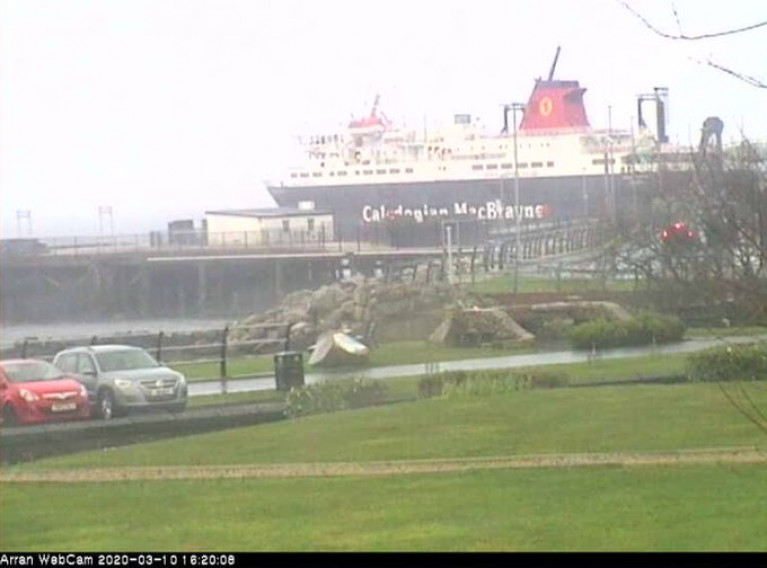Displaying items by tag: Scotland (Isle of Arran)
The busiest ferry crossing in Scotland, reports The Herald, has ground to a halt for safety reasons in a move that could lead to six weeks of disruption over a busy school holiday period.
Fifteen sailings between Brodick on the Isle of Arran and Ardrossan have been cancelled since Sunday and the first sailings of tomorrow have already been dropped because of a fault with the aging ferry's mooring equipment.
On Tuesday there were no sailings at all during the day, with the first seven journeys cancelled. Only the 4.40pm from Brodick and another to return to the island were able to operate as CalMac said it needed to berth on the island overnight.
The first sailings of tomorrow (Thursday, 12 March) have already been dropped with no news of any further crossings expected till after a 10am review. Travellers are being warned all services are liable to disruption or cancellation at short notice.
On top of that, a fault with both mezzanine decks, means the 1000 passenger and 110 car capacity of the vessel will be cut until repairs can be carried out.
The latest calamity to hit CalMac's MV Caledonian Isles has angered islanders who have demanded a long overdue temporary replacement to allow vital supplies and drugs to reach the largest island in the Firth of Clyde (Arran: dubbed Scotland in miniature).
It comes as CalMac bosses have said the £300m ferries "shambles" at Ferguson Marine's shipyard (see related last story) in Port Glasgow is causing knock-on 'major disruption' for island communities up and down the west coast of Scotland.
Dual fuel replacement Arran ferry Glen Sannox and her as yet unnamed sister were due to enter service in mid-2018 but the calamitous contract has doubled in price and work on the vessels won't be finished until at least 2022.
Ferguson Marine in Port Glasgow was handed a £97 million contract to build two the ferries in 2015.
For more about the beleagured newbuild pair and performance of CalMac sailings in 2019, click here.






























































